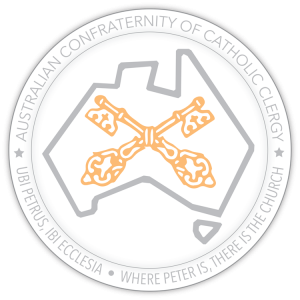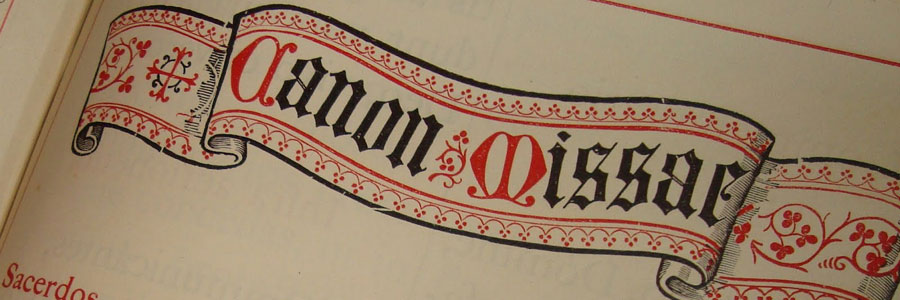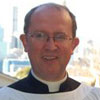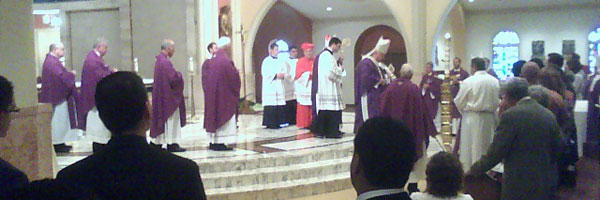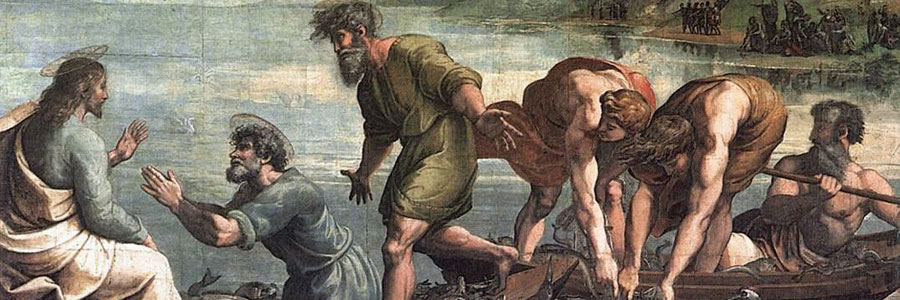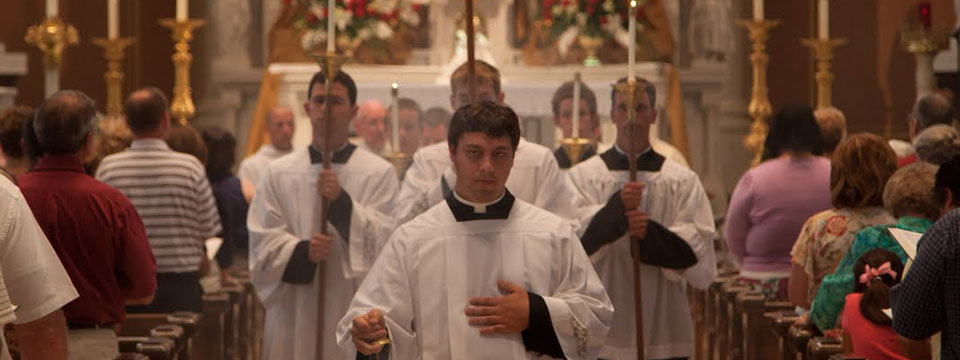Pope Benedict XVI’s Apostolic Letter, Summorum Pontificum, promulgated Motu Proprio, is an event equal in significance to Pope St Pius V’s Bull, Quo primum, of 1570, and the Second Vatican Council’s Constitution on the Sacred Liturgy, Sacrosanctum Concilium (1963).
Fundamental canonical principles. The fundamental canonical point of Summorum Pontificum is that the ancient or historical usage of the Roman Rite, as codified in the Missal of Pope St Pius V in 1570 and reissued in its last form by Blessed Pope John XXIII in 1962, was not abrogated or abolished by the subsequent promulgation in 1970 of a newer usage of the Roman Rite, following Vatican Council II, by Pope Paul VI.
The legal status of the more ancient or extraordinary form of the Roman Rite rests first of all on immemorial custom. St Pius V’s Bull Quo Primum issued on 14th July 1570 adds to this the protection of legislation: “We give and grant in perpetuity that for the singing or reading of Mass in any Church whatsoever this Missal may be followed absolutely, without any scruple of conscience or fear of incurring any penalty, judgment or censure, and may be freely and lawfully used.”
Pope Paul VI’s Constitution Missale Romanum of 1969 proposed a new form of the Roman Rite of Mass, but did not contain any language suggesting the abrogation or abolition of the older use, and its total substitution by the new. Neither Quo Primum nor the underlying custom was disturbed in this regard; and it is a fundamental canonical principle that in doubt, the revocation of a previous law or the suppression of custom is not presumed. A commission of Cardinals which met in Rome in 1986 supported this view, but its findings were never published. But the one argument which was plausible until the publication of the Motu Proprio was that since the Missal of Paul VI was simply a new edition of the Roman Missal (not a new Rite as such), such language of abrogation had no place and indeed was unnecessary: and that there was therefore an implicit total substitution of the 1962 Missal by the Missal of 1969. Summorum Pontificum definitively rejects this view. In it, Pope Benedict judges and declares in Article 1 that the Roman Missal of St Pius V reissued by Bl John XXIII, and the Missal of Paul VI, are two usages of the one Roman Rite, and that the former was never abrogated, or replaced, by the latter.
Due honour for venerable usage. It should be noted then that the Pope is not legislating in Article 1. He is not creating a new legal status for the 1962 Missal. Rather, he is recognising an existing legal reality. The Pope also insists that the Missal reissued by Bl John XXIII, as the most recent codification of the historical liturgy of Rome, “must be given due honour for its venerable and ancient usage.”
On the basis of this judgement by the Supreme authority that the 1962 Missal has remained in vigour, many of the provisions of Quattuor abhinc annos (1984) and Ecclesia Dei (1988) are superseded. These operated essentially on the supposition – now overturned – that special permission, or an “indult”, was necessary to celebrate Mass according to what it now known as the “extraordinary form” of the Roman Rite.
The remaining articles of the Motu Proprio are variously legislative – insofar as they regulate the right to celebrate or attend the extraordinary form of the Roman Rite – interpretive, hortatory, or concerned with enforcement.
Article 2 allows that for Masses celebrated “without the people”, any priest of the Latin Rite (Diocesan or Religious), may use either Missal. It explicitly states that no further permission from the Apostolic See or his own Ordinary (ie local Bishop or religious superior) is necessary. It seems that sine populo must be interpreted as simply unscheduled, or unadvertised, as Article 4 goes on to state that such Masses may after all be attended by any of the faithful who, of their own free will, ask to be admitted. These highly significant articles insist on the absolute equivalence of either Missal for so-called private celebrations. There has been some confusion regarding the provision that such celebrations may occur on any day “with the exception of the Easter Triduum”. The article is not banning the celebration of the 1962 Missal for the Triduum: it is saying merely that private celebrations are not permitted. It has never been permitted to celebrate the Triduum privately in either use: these liturgies of their very nature require the attendance of the Faithful.
Pastoral responses. Scheduled public Masses for a stable group are provided for in Article 5. The Pope asks Parish Priests and Rectors “willingly” (libenter) to make provision for requests by such groups. There is no minimum number given for the constitution of such a group: one hopes that goodwill and commonsense will prevail on the part of both pastors and the faithful. Such public celebrations may take place once on Sundays and feasts, and also on weekdays, and for special events such as marriages and funerals. The sense of this article is that in a parish or community where the newer use is normative, there is meant nevertheless to be the greatest possible availability of the older use as well should there be a group requesting it, as long as this does not infringe on the ordinary pastoral care of the parish. To this end, explicit permission is also given for the older rituals to be used for the other sacraments (Article 9).
The Lectionary. Permission for the readings to be in the vernacular is given in Article 6: this extends to the whole Latin Rite permissions that previously had been conceded to France and Germany. If the vernacular is used, it must be in an edition of the Lectionary approved by the Holy See. This does not mean however that the new Lectionary should be used, since its cycle does not for the most part correspond with the Propers of the older use. Rather, one would need to employ one of the approved Lectionaries of the so-called “interim rite” period, between 1964 -1968. Various Lectionaries were approved for different regions during this time, all of them based on the calendar and propers of the traditional temporal and sanctoral cycles.
Ecclesia Dei Commission. Responding to the difficulties which unfortunately have been experienced by the faithful until now in some places, in securing reasonable access to the older usage, the Pope makes provision for assistance and, if necessary, enforcement. Those faithful who have not been able to have their requests met by the Parish Priest are directed first to the Diocesan Bishop, and if this proves unsatisfactory, then the matter is to be referred to the Pontifical Commission Ecclesia Dei (Art. 7). This Commission, in addition to the specific powers granted to it in 1988, now has a general power delegated to it to exercise the authority of the Holy See in all mattters pertaining to the observance and application of Summorum Pontificum (Art. 12).
Finally, in addition to a broad availability of the older usage in Parishes that retain there essential orientation in the ordinary form of the Roman Rite, the Motu Proprio foresees, and makes provision for, a greater number of communities dedicated to the extraordinary form as their normative worship. Since the promulgation of Ecclesia Dei in 1988 these already existed by way of special permission (eg, the Benedictines of Le Barroux, the Institute of Christ the King Sovereign Priest, the Priestly Fraternity of St Peter), but now it is possible for Religious or clerical communities to decide – either as individual communities or entire institutes – to use the 1962 Missal permanently and habitually. The decision for this now rests with the Majors Superior of such Institutes (Art. 3). Corresponding to this, there is encouragement for stable communities of the lay faithful dedicated to the extraordinary form to be established or consolidated by way of the appointment of chaplains, and especially the erection of personal parishes (Art. 10).
Implications
What are the implications of Summorum Pontificum, and of the Pope’s letter to the Bishops which accompanied it?
Limits to ecclesial authority. Firstly, in the Pope’s judgement that the older usage had not been abrogated, there is a renewed emphasis on the limits of Ecclesial authority – even of the Supreme authority of the Pope – and a reminder that this must be exercised in humility. This has been a long-standing theme in the writings of Joseph Ratzinger, but let it suffice to quote an address of the then Cardinal on 24th October 1998 to pilgrims who had come to Rome to celebrate the 10th anniversary of Ecclesia Dei: “Orthodox forms of a rite are a living reality, born of a dialogue of love between the Church and her Spouse. They are the expression of the Church’s life and have nourished faith, prayer and the true life of generations, and in specific forms they incarnate both God’s initiative and man’s response. These rites can come to an end if those who used them in a particular epoch die, or if the living conditions of those people should change. The Church authority has the power to define and limit the use of such rites in the different historical situations, but She can never simply ban them! So the Council ordered the reform of the Liturgical Books but it did not ban the previous ones.” (Notizario 126-127 of Una Voce) Ecumenical implications. There are certainly positive implications here for ecumenism: already there are indications that there is appreciation by the Eastern Orthodox Churches of a renewed fidelity to traditional liturgical forms in the West, and of an attitude of humility by the Pope before the treasures of which he is steward.
“Hermeneutic of continuity.” Secondly, there is a strong emphasis on continuity in the life of the Church. In his letter to the Bishops, Pope Benedict rejects in advance the view that the Motu Proprio detracts from the authority of the Second Vatican Council. Rather, the Pope sees this initiative as an important part of “coming to an interior reconciliation in the heart of the Church.” Although the healing of the rupture with the Society of St Pius X is an important part of this, that issue does not exhaust the meaning of this “interior reconciliation”. Here, I believe the Pope is referring to, and acting upon, his now famous speech to the Roman curia of 22nd December 2005. In this speech, Pope Benedict contrasted a hermeneutic of discontinuity and rupture with one of continuity and reform, in the interpretation and application of Vatican Council II. Only the second of these is legitimate. What better way to demonstrate that the Church of the pre-Conciliar and post-Conciliar periods is one and the same Catholic Church? Hence Benedict’s insistence in his letter to the Bishops: “There is no contradiction between the two editions of the Roman Missal. In the history of the liturgy there is growth and progress, but no rupture. What earlier generations held as sacred, remains sacred and great for us too, and it cannot be all of a sudden entirely forbidden or even considered harmfiul.” In this way, the renewed vigour of the historical usage of the Roman Rite is meant to be a powerful sign of the Church’s own continuity and essential identity.
Mutual enrichment between “extraordinary” and “ordinary” forms of the Roman Rite. A third significant implication is the effect that the Motu Proprio might have, incidentally, on the celebration and even ultimate reform of the newer liturgical books. Again, in his letter to the Bishops, the Pope asserts that “the two Forms of the usage of the Roman Rite can be mutually enriching”. In this connection, he speaks of the older Missal using some of the newer prefaces, and celebrating Saints canonised since 1962, and of the newer usage learning how “to demonstrate, more powerfully than has been the case hitherto, the sacrality which attracts many people to the former usage.” This appears to be an endorsement of the so-called “Reform of the Reform”, championed by Fr Joseph Fessio SJ and others. Clearly, the Pope expects a resurgent and vital presence by the older usage of the Roman Rite to “inform”, organically, the celebration of the newer usage: and perhaps, eventually, to inspire textual and ritual revisions to the newer Missal itself.
Impact on the life and ministry of priests. Finally, the Motu Proprio ought to have have a significant impact on the life and ministry of priests, and priestly formation. There are two reasons for priests to take Summorum Pontificum to heart, and to act upon it: one personal, the other pastoral. The Holy Father in his letter to the Bishops states that “it behooves all of us to preserve the riches which have developed in the Church’s faith and prayer, and to give them their proper place.” Bishops simply cannot do this without priestly support. As the Pope points out in his letter to Bishops (see next article), he in principle is not taking anything from their authority over the liturgy in the Diocese. But always episcopal interventions must be in the terms of the Motu Proprio (that is, to enable, not to prevent or forbid). This seems to be the first time a Pope has directly charged Parish Priests with personal responsibility to respond to requests of this nature.
Secondly, there is great personal and spiritual value for priests in “re-connecting” with the forms in which their predecessors offered the Eucharistic sacrifice for centuries, and which remained normative and indeed obligatory until a mere forty or so years ago. As one priest whom I recently helped to learn the older use, expressed it: “I feel as if I’m recovering from amnesia!” Interestingly, in the Motu Proprio the Holy Father also made explicit provision for those in Holy Orders bound to pray the Divine Office, to use the older form (promulgated in 1962 by Bl. John XXIII) if they wish (Art. 9). On a pastoral level, if priests are to be able to respond to requests by the faithful in the way the Holy Father expects, then they should consider their need to reach a certain level of competence in the older use. The same considerations obtain – perhaps with even greater force – to the formation of seminarians. Seminaries ought to take very seriously the Church’s insistence (which never ceased) on the importance of learning Latin, and provision should be made for seminarians (at least those who express interest) to learn how to celebrate both forms of the Roman Rite, so that they are fully equipped by the time of their priestly ordination.
The long-period perspective: 2045AD … Summorum Pontificum was promulgated 38 years after the new (now “ordinary”) form of the Roman Rite was introduced in 1969. What ought we expect too see in the life of the Church 38 years from now, in 2045? Please God, a stable and enriched liturgical life, in which most Catholics have an appreciation of their heritage of worship through the occasional or even regular celebration of the extraordinary form of the Roman Rite in many or even most parishes, without prejudice to the normative status of the ordinary form in these communities. However, the ordinary form itself may very likely have undergone some reforms by then, drawing it closer to the historical form: there will be a greater sense of decorum and a move away from informality and spontaneity. It is possible, and I suspect likely, that the newer forms will re-discover and embrace the value of “orientation”, with the celebrant and people both looking together towards the Lord, rather than across the altar at each other. Closely connected with this, altars of dignity and nobility, and which have an elevated position in the sanctuary, will be preferred. The respective values of Latin and the vernacular will be appreciated and integrated, rather than placed in opposition to each other. Gregorian Chant will once more be cherished and given a place of honour, and the value of other forms of Sacred Music will be tested against it. In the midst of this there will be flourishing communities – Parishes, and religious and clerical institutes – for whom the “extraordinary form” of the Roman Rite is normative, its beauty and dignity continuing to move and inspire new generations. And the Church will give thanks for Pope Benedict XVI.
